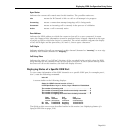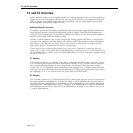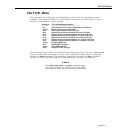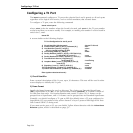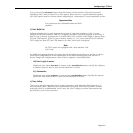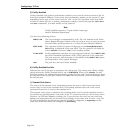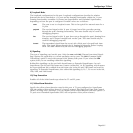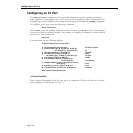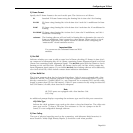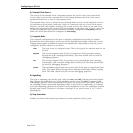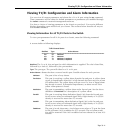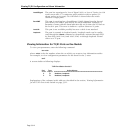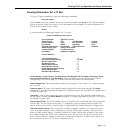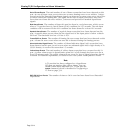
Configuring a T1 Port
Page 33-7
8) Loopback Mode
The loopback configuration for this port. Loopback configurations describe the relation
between the device attached to a
T1 port and the framing functionality within the T1 port.
Framing functionality assembles T1 frames into SuperFrames and Extended SuperFrames,
depending on how the port is configured. Possible values are as follows:
none The port is not in a loopback state. This is the typical live network state for a
T1 port.
payload The received signal at this T1 port is looped out of the port after passing
through the port’s framing functionality. This state should only be used for
debugging purposes.
line The received signal at this T1 port does not go through the port’s framing func-
tionality, and is looped straight back out the port. This state should only be
used for debugging purposes.
inward The transmitted signal from the inward side of this port is looped back inter-
nally. The signal passes through the T1 framing functionality before looping
back. This state should only be used for debugging purposes.
9) Signaling
The type of signaling used on this port. Only the
none and CAS (Channel Associated Signal-
ling) options are applicable to a circuit emulation service port. The CCS (Common Signal
Channeling) option is used with external ISDN Primary Rate ports. If you select the CAS
option, then you are enabling robbed-bit signalling.
Robbed-bit signalling can be used with SuperFrames or Extended SuperFrames. In each
SuperFrame, the 6th and 12th frame may contain “robbed bit” (A, B) signalling, which means
the least significant bit is robbed from each time slot in the 6th and 12th frame and used for
signalling. In Extended SuperFrames, this robbed-bit signalling (A, B, C, D) occurs in the 6th,
12th, 18th, and 24th frames.
10) Trap Generation
Enables all of the
SNMP-based traps related to T1 and E1 ports.
11) Yellow Alarm Detection
Specify the yellow alarm detection state for this port. A T1 port configured as SuperFrame
(SF) can produce false yellow alarms if a Layer 2 protocol like High-Level Data Link Control
(HDLC) is being used. Therefore, you can disable yellow alarm detection with this option. (A
T1 port set to Extended SuperFrame (ESF) will not produce false yellow alarms.)



